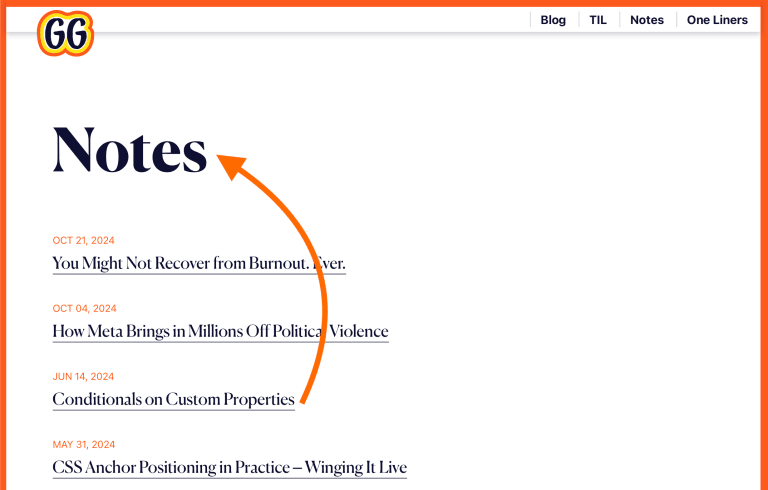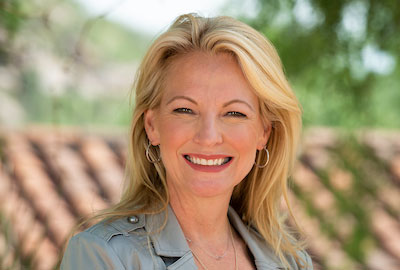
Kevlyn Walsh is a Denver-based art teacher turned entrepreneur. She launched Festive Gal, an Etsy shop, in 2019 after her handmade headband was a hit among Christmas party attendees.
Fast forward to 2025, and Festive Gal is thriving, selling custom gifts and party supplies. A new second site, Bake It Fancy, on Shopify, sells cooking accessories.
Amid the growth, Kevlyn manages employees, production, and, yes, Etsy constraints. She addressed those challenges and more in our recent conversation.
Our entire audio is embedded below. The transcript is edited for clarity and length.
Eric Bandholz: Who are you, and what do you do?
Kevlyn Walsh: I run two brands. My first, Festive Gal, grew mainly on Etsy and offers custom gifts and party supplies to make life more fun. My second, Bake It Fancy, is a new brand focused on baking accessories that help people create beautiful cookies.
Bake It Fancy evolved from a best-selling Festive Gal product. It performed so well that I decided it deserved its own identity. Festive Gal celebrates parties and gifting; Bake It Fancy is all about creativity in the kitchen.
Etsy is how I became a business owner. Before opening my shop, I had no idea what a conversion rate was or how to sell online. It all started with an ugly Christmas sweater party. I made an over-the-top holiday headband covered in tinsel, bows, and a tiny elf.
Everyone loved it, so I made more, opened an Etsy shop, and sold out by Christmas. That success inspired me to keep creating new products and following party trends.
At first, I was still teaching full-time, but my Etsy sales eventually surpassed my teacher salary. By 2019, I quit teaching to run my shop full time — and I’ve never looked back.
The original headbands were too labor-intensive to scale, so I simplified them into paper party headbands with customizable phrases. They became Festive Gal’s signature product. I created designs for birthdays, bachelorette parties, and trending themes — like Game of Thrones fans hosting viewing parties. I made headbands with phrases such as “Hold the Door” and “I Drink and I Know Things,” and they sold like crazy.
Back then, I didn’t think much about trademarks and used pop-culture phrases freely. Now that my business is bigger, I avoid those entirely. Using names like “Game of Thrones” could get a shop flagged. It’s frustrating because Etsy is still full of Disney and other IP-based items, yet enforcement feels aimed at successful sellers. I’ve explored licensing, but the costs, reporting, and low margins made it more hassle than it was worth.
Bandholz: How do you manage custom orders on Etsy?
Walsh: Etsy’s basic customization tools aree limited. Each listing includes an input field that customers must complete before adding an item to their cart, to help prevent missed details. However, sellers only get two dropdown menus and one text box. I have to simplify the listing or get creative for buyers to choose multiple options, such as color, font, and size.
That lack of flexibility makes Etsy’s user interface challenging for complex customizations. In contrast, Shopify has apps that allow unlimited dropdowns and far more personalization features. On Etsy, if a buyer forgets to include key details such as the name for a custom item, I have to message her directly. That extra communication can be time-consuming and slow down production.
Bandholz: How does Etsy define “handmade”?
Walsh: It’s ironic that Etsy promotes itself as a handmade platform. Real success there requires efficiency and operations. To scale, you need systems, employees, and streamlined production — but you can’t build that until you have sales. It’s a catch-22. I’ve had products go viral, but there’s a limit to how many we can make before delays frustrate customers. Etsy doesn’t provide the tools sellers need to manage growth efficiently.
For example, there’s no multi-user access. I can’t give a virtual assistant or employee their own login to handle messages or shipping without sharing my banking information. That makes delegation risky.
As for “handmade,” there’s a lot of gray area. Some sellers import mostly finished products — items 90% made in China — and add customization in the U.S. through embroidery or vinyl. Etsy allows some flexibility there, but the rules are vague. The guidelines mention terms such as “made, sourced, or designed by seller,” which are open to interpretation.
In Etsy forums, sellers debate what those definitions mean and worry whether new policies could jeopardize their shops.
Bandholz: What advice would you give someone considering selling on Etsy?
Walsh: First, define your goals. The platform is perfect if you want only to make “fun money” from a craft you love. Enjoy the creative process, make products that delight you, and celebrate each sale.
But if your goal is to replace your full-time income, you have to approach Etsy strategically. Choose a product that can scale efficiently. On Etsy, sales compound. The algorithm rewards momentum, so when a listing sells, it signals that people want that product. Etsy earns a percentage of each sale, and it promotes listings that generate revenue. So the more you sell, the more exposure your products get.
Plan early for operations. Will you hire help? How will you handle shipping? Can you manage rush orders for personalized gifts?
Etsy customers often order last-minute, so reliability is key. I’ve worked through the flu to meet deadlines because I didn’t want to disappoint buyers. Now that I have employees, that stress is lighter, but it took planning and growth.
Bandholz: Is Etsy your main sales channel?
Walsh: Yes, Etsy is still my primary source of sales, and I’ve had great success there. But the platform’s overall traffic has declined. I think part of the issue is quality control — Etsy has allowed too many low-quality sellers. Cheap, mass-produced items clutter search results. It’s lost some of the curated, handmade charm that made it special.
Because of that, I’m working to grow off-platform. Relying solely on Etsy feels risky, especially with how inconsistent their seller support has become. Recently, Etsy deployed AI bots to remove non-handmade listings, but the system often flags legitimate shops.
Many legitimate sellers have had top-performing products or entire shops deactivated with no way to reach a human for help. It’s a tough situation for honest creators trying to run real handmade businesses.
Bandholz: Is the new baking brand on Etsy, too?
Walsh: No, I’m building Bake It Fancy on Shopify and driving traffic through Meta ads and content creation. I even converted part of my warehouse into a “media room” with a fake kitchen and a real oven from Home Depot, so I can film baking videos and tutorials. My goal is to grow this brand independently, without relying on third-party marketplaces.
I’ve learned a lot about ecommerce after years of running Festive Gal on Etsy. Now I’m ready to apply those lessons — using Shopify, ads, and content — to build a brand with full control.
Content creation used to be hard for me. I have a three-year-old and a one-year-old, and my home kitchen isn’t ideal for filming. This new setup makes it easier and more fun. Plus, baking content is naturally engaging. Watching someone decorate cookies is satisfying and creative.
With Festive Gal, I never relied on content since Etsy brought steady traffic. But Bake It Fancy is different. Cooking is so demonstrable and visual that I can easily film with just my hands, and I don’t even need to get camera-ready every time.
Bandholz: Where can folks buy your products and follow you?
Walsh: My Etsy shop is Festive Gal. Festive Gal also has a Shopify website, FestiveGal.com. BakeItFancy.com is ramping up. I’m on Instagram and LinkedIn.





